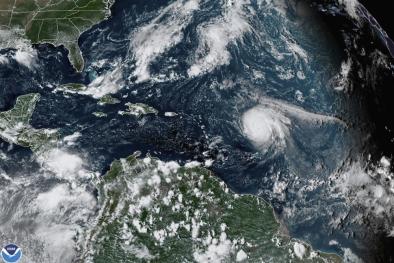Science Source
Anthropogenic Warming of Earth's Climate System
- Compares the temporal variability of the heat content of the world ocean, of the global atmosphere, and of components of Earth's cryosphere during the latter half of the 20th century
- Finds that each component has increased its heat content (the atmosphere and the ocean) or exhibited melting (the cryosphere)
- Finds that the estimated increase of observed global ocean heat content (over the depth range from 0 to 3000 meters) between the 1950s and 1990s is at least one order of magnitude larger than the increase in heat content of any other component
- Simulation results using an atmosphere-ocean general circulation model that includes estimates of the radiative effects of observed temporal variations in greenhouse gases, sulfate aerosols, solar irradiance, and volcanic aerosols over the past century agree with the study's observation-based estimate of the increase in ocean heat content
- The results suggest that the observed increase in ocean heat content may largely be due to the increase of anthropogenic gases in Earth's atmosphere
Related Content
Science Source
| Science of The Total Environment
A quantitative analysis of marine heatwaves in response to rising sea surface temperature
Headline

Mar 22, 2023 | Washington Post
Earth’s oceans are showing early and surprising record warming
Headline

May 25, 2022 | Climate Nexus Hot News
NOAA Forecast Busier Than Average Atlantic Hurricane Season For 7th Year In A Row
Science Source
| Advances in Atmospheric Sciences
Another Record: Ocean Warming Continues through 2021 despite La Niña Conditions
Lijing Cheng, John Abraham, Kevin E. Trenberth et al


